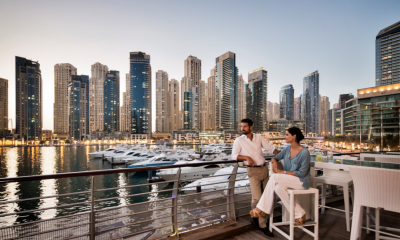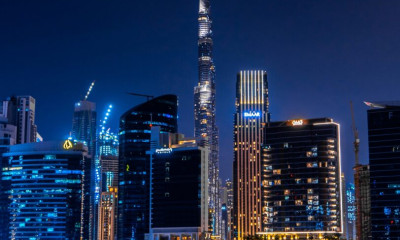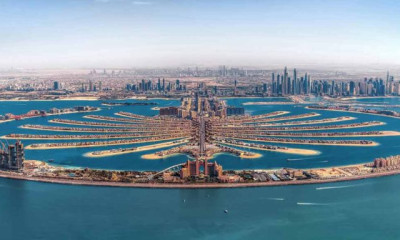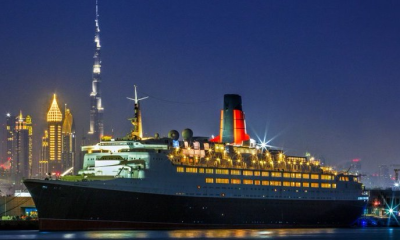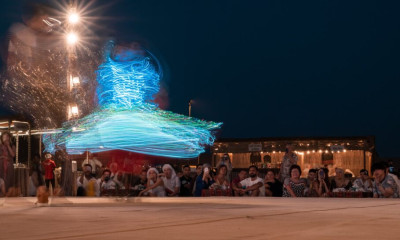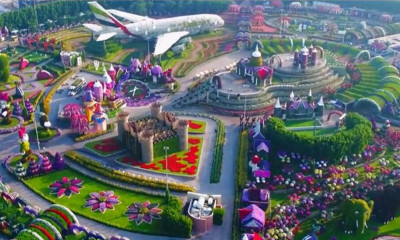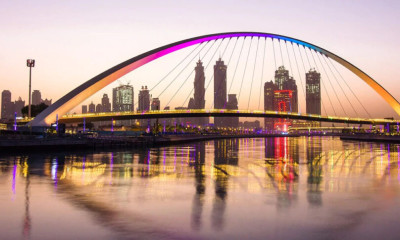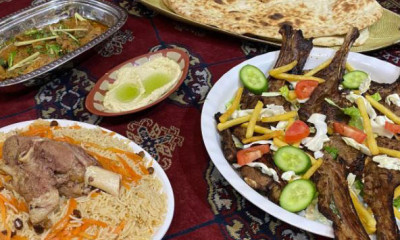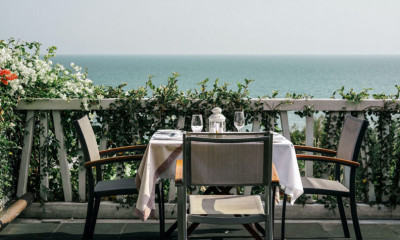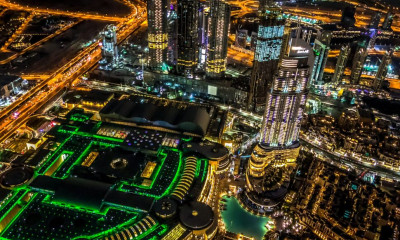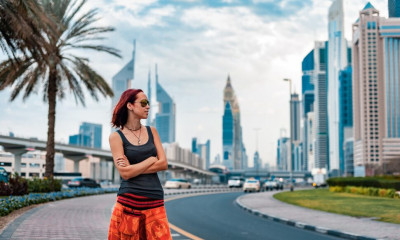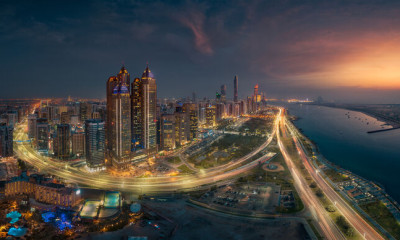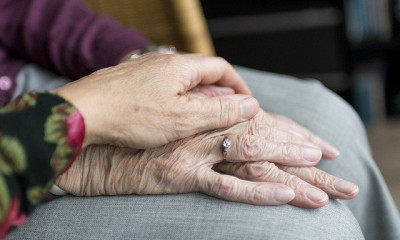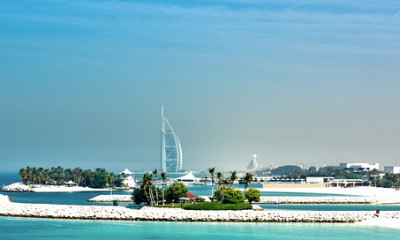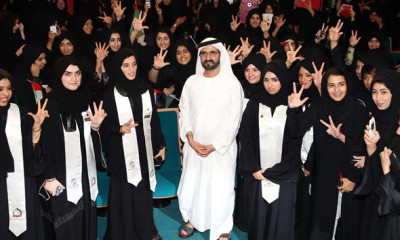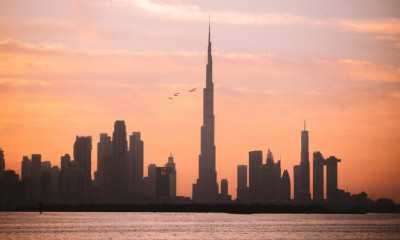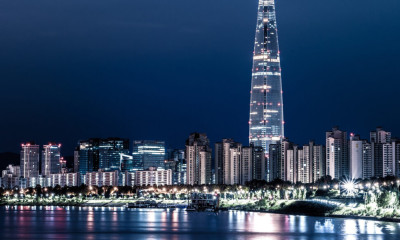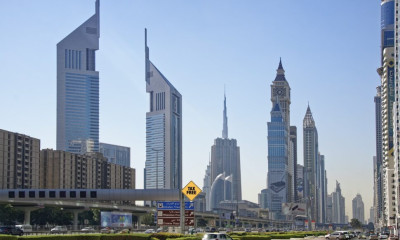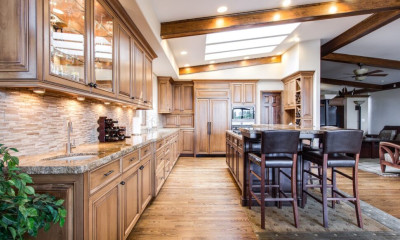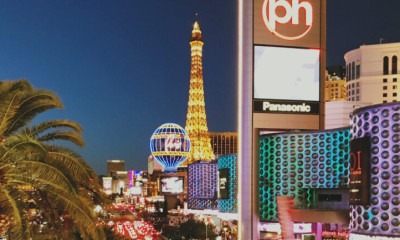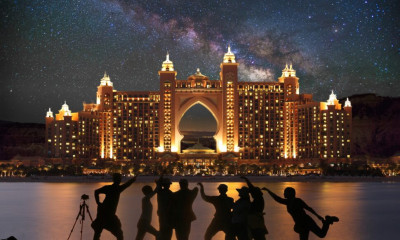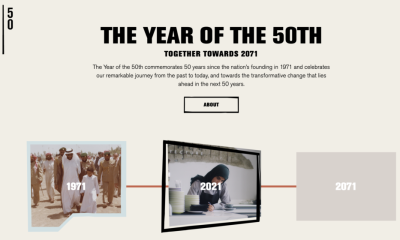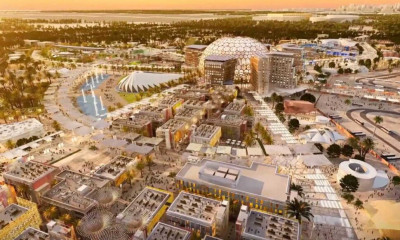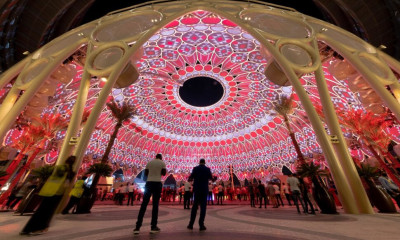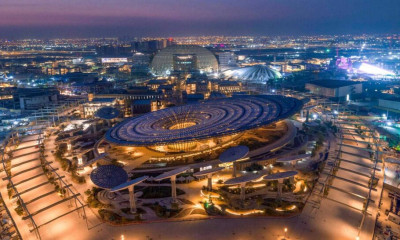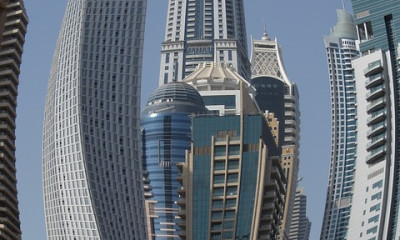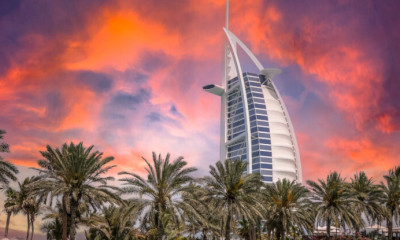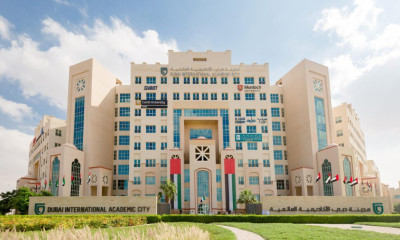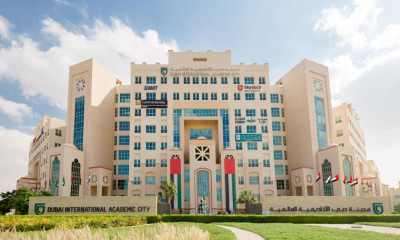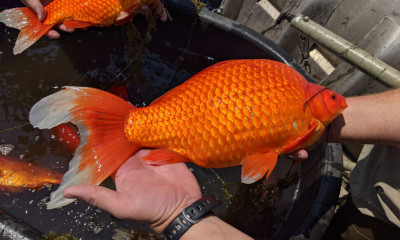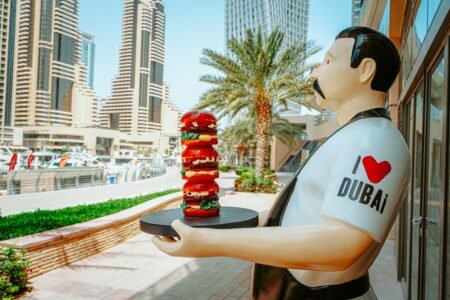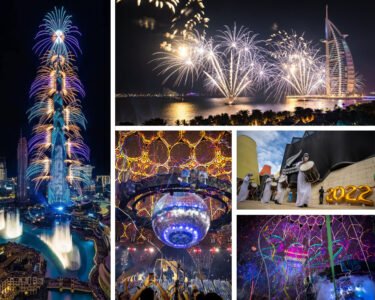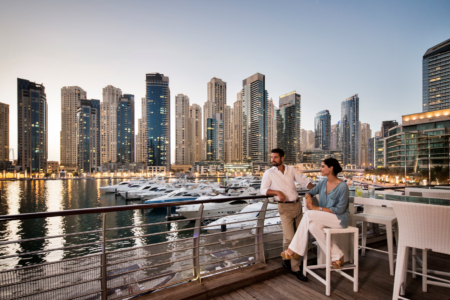For the first time in World Expo history, every participating country will have its own pavilion. It’s been touted as a world without borders. Come October 1, 2021, and literally the entire world will be on display in Dubai. Almost 200 pavilions will offer immersive cultural experiences and let the visitors discover what makes each country unique. This is also the first World Expo where country pavilions are organised by theme and not according to geography. From Algeria to Zimbabwe, we take you on a journey across some of the key pavilions that will bring the world to Dubai during the expo.

Algeria’s two-storeyed pavilion at Expo 2020 has been created around the notion of a journey to Africa’s largest country through a 270-degree panoramic screen experience. Visitors will be invited to go on a journey and discover Algeria in all its aspects. The pavilion’s architecture and narrative form a ‘gateway to the future’.
Australia will challenge perceptions about the world’s smallest continent through the 3,552-square-metre, $150-million+ Blue Sky Dreaming pavilion that seeks to highlight its diversity and ingenuity through the dramatic roof structure inspired by the cumulus cloud, a feature of its diverse landscape.
Austria will have a 2,400-square-metre, €16.48-million pavilion consisting of 38 interlocking cones made of concrete. The landlocked Central European country has used a 9,000-year-old soil to build the pavilion with photovoltaic cells on its rooftop to produce energy.
Azerbaijan’s nature-inspired, 2,086-square-metre pavilion with a leaf-shaped roof is based on two units of nature: the tree and the leaf. The ‘Seeds for the Future’ pavilion has gardens and walkways and showcases solar power, natural ventilation and rainwater harvesting technology.
Bahrain, the only island-state in the Arabian Gulf and the wider Middle East, has a 2,000-square-metre pavilion, Density Weaves Opportunities, whose 126 structural columns offer a feel of one walking through dense woodland. The aluminium façade represents its main export.
In the country that houses its second-largest diaspora, Bangladesh has chosen a two-storeyed, 4,000-square-metre box-type pavilion. The South Asian country is showcasing its unique landscape of lush greenery, waterways, fertile plains and mangrove forest as it celebrates the centennial birth anniversary of its founder Sheikh Mujibur Rahman.

Belarus has selected the ‘Forest of Future Technology’ theme for its 1200-square-metre, three-level pavilion that explores how nature and technology can collectively shape the world. The landlocked East European country’s pavilion will resemble the primaeval forests and explore themes of innovation, investment and individuality. With illuminated green shoots sprouting at its main entrance, visitors will find an interactive, 15-metre-tall ‘Tree of Mind’ installation. It will have on display a 4D printer that can reproduce live cells.
Headquarters to the European Union and the Nato, Belgium, which has hosted World Expo six times, has named its 2,400-square-metre pavilion Smart and Green Belgium 2050. Covered in lush greenery, it will draw on renewable resources to more than cover its energy usage. Shaped like a ‘green ark,’ the design uses bio-sourced materials and smart tech to make it a zero-waste pavilion. A real oasis with 10,000 plants, it will store up to 35 tonnes of CO2 throughout the exhibition. The geometry of the pavilion has been designed to offer visitors the largest possible shaded and ventilated outdoor area.
Brazil, continuing its tradition of participating in the Expo since 1851, will focus on the wellbeing of the water networks, climate change and pollution through the 4,500-square-metre pavilion that features a central square immersed in water to reference the county being home to Amazon, the largest tropical rainforest in the world. At night, the illuminated structure will resemble a floating cube and recreate the feeling of exploring the Amazon basin using an expansive body of water enclosed by a lightweight tensile structure.
The pavilion will produce its very own energy, recycle its very own water, and make the use of air conditioning unnecessary by combining the constant flow of air through an open façade, with the humidity of running water and of the vegetation under the shadow.
Canada, which had previously hosted two Expos and participating first in over two decades, has selected The Future in Mind theme for the 15,000-square-feet pavilion whose wooden structure is an architectural reproduction of the country’s landscapes and celebrates its diversity with the use of geometric lattice. Inspired by the drum, the circle-shaped pavilion has been built for $6 million and features a 360-degree theatre experience for an immersive journey through its history. It will highlight its leadership through three key subthemes: Diversity, Artificial Intelligence and Aerospace.
China, with a long history of participation in Expos since the very first in 1851 and hosting the largest and most-visited to date in Shanghai in 2010, will have one of the largest pavilions measuring 4,636 square metres. The lantern-inspired pavilion has been built from eco-friendly materials using innovative modern techniques and offers a dazzling display of digital lights by night. Themed Building a Community with a Shared Future for Mankind – Innovation and Opportunity, it highlights the country’s scientific and technological achievements in information, science and technology, and transportation, including 5G technology, artificial intelligence, and the ‘Belt and Road’ initiative.

Cuba through its imposing pavilion will showcase its colourful culture, more famed for vintage cars and eye-catching street art while unlocking its potential across a range of sectors like sustainable cities, renewable energy and biotechnology. The Caribbean island will showcase its advances in health, education and biotechnology.
The Czech Republic’s 2,200-square-metre pavilion has an ‘organic cloud structure that grows out from the garden at the place of the cultivated desert’. Covered with Glass Fibre Reinforced Plastics (GFRP), the spring-themed pavilion features a unique solar-powered centrepiece.
Finland which participated in the Expo for the first time in 1900 in Paris, is utilising its 1,867-square metre, Arabic tent-shaped pavilion made to appear of snow to propagate its goal of becoming carbon neutral by 2035. Visitors to the Nordic country’s ‘snow cape’ pavilion will pass through the slender entrance to enter a ‘gorge,’ a curved wooden space reminiscent of a Finnish forest. Themed ‘Sharing Innovative Competences’, the pavilion is the outcome of efforts of over 110 companies that pooled €5 million of corporate funding for it.
France, host to six expos in history, has called its platform the Pavilion of Light. Spread over 4,200 square metres and standing 21 metres tall, it provides a panoramic view of the expo site. The ‘living structure’ will have its façade and roof covered with photovoltaic solar panels, which will produce enough energy to cover more than 80 per cent of its needs. Visitors will be transported into a glittering, Monet-inspired vision of the country’s sustainable future. They will be surrounded by waves of light that appear to spread out and retreat from an artificial sky.
The $15.6-million pavilion will enable visitors to experience wandering through gardens filled with olive and lemon trees. They will be immersed in a sensory experience that will allow them to smell and hear the sounds of a traditional market. When the Expo ends, more than 80 per cent of the pavilion – including the steel structure, electrical equipment, solar panels and the cladding panels on the façade – will be reused.
Germany is one of the 31 countries that signed the 1928 Paris Convention that created the BIE. It was also the host of Expo 2000 Hannover. Germany’s 4,500-square-metre multi-storeyed pavilion will offer visitors an entertaining hands-on digital experience. Its campus-themed pavilion will have an amorphous roof encased in a translucent ETFE membrane. A key attraction at the German pavilion will be a rope-less lift that can travel horizontally and vertically. Instead of using ropes, the cabins are powered by magnetic technology.
Multi will demonstrate how various transportation solutions, from underground logistics to air taxis, can be interconnected with the rope-less elevator. It has invested €50 million for its participation in the expo by featuring a vertical campus design consisting of separate modules that converge at an atrium with a stage and restaurant.
Visitors will begin their journey by ‘enrolling’. After sharing their name, nationality and preferred language, they will get an IAMU-enabled badge that will guide them through. It will feature a massive pit containing 155,000 balls, each of which will highlight a sustainability leader from Germany or tell its own sustainability-related story. Visitors will have to select a ball and place it under a scanner to uncover its message. It will also include Energy, Future and Biodiversity labs to enable people to learn about Germany’s credentials in sustainability. An intelligent ‘invisible companion’ will accompany visitors during their tour.

Hungary, present in Expos since the mid-19th century, had earmarked $75.4 million for its participation with its pavilion design featuring a timber-framed circular structure that pays tribute to the country’s thermal waters. Designed by an architecture student, the 1,828-square-metre pavilion focuses on the healing power of water, balneology (the ancient treatment of ailments by bathing in terminal mineral waters) and curative tourism.
The pavilion will be called Aqua Roots of Hungary. Visitors will be able to immerse themselves in a relaxing, healing and rehabilitative experience as the country spotlights its unique, mineral-rich thermal springs. The Makovecz-style imposing pavilion has been built using ‘dry technology’ with an internal dome and outer casing built without concrete, reinforced concrete, cement, or any material that requires water.
India, still not a BIE member, has spent $68 million on a permanent-structured four-storeyed pavilion measuring 4,800 square metres. Its building is covered by a façade resembling leaves with a statue of Mahatma Gandhi on it. The pavilion will take its visitors on a journey through 5,000 years of Indian civilisation along with showcasing the country’s strength in five Ts: talent, trade, tradition, tourism and technology.

Ireland’s 900-square metre, €4 million pavilion has been inspired by the magnificent Stone Age megalithic Newgrange lightbox monument and is a fusion of Western and Eastern architecture. Visitors will have a 360-degree virtual immersive experience. Audio-visual projections will provide a sensory impression of Ireland as an island of inspiration and its 5,000 years history. It has four themes: The Irish Fantastic, The Irish Scientific, Irish World Changers and Trailblazers and Global Ireland.
Italy, host to two past expos (1906 and 2015), has been involved with expos since the very first one. The country is also a signatory to the Paris Convention for the BIE. Its 3,500-square-metre large and 27-metre tall pavilion will use architecture for a creative and innovative presentation of ‘beauty that connects people’. The pavilion on expo’s ‘cultural spine’ will feature three 55-metre-long inverted ship hulls over its roofline and 40mm ropes featuring integrated LED lighting technology.

The ship hulls will be propped up on pillars to resemble petals in green, white and red – the colours of Italy’s tricolour flag. Hulls celebrate the nation’s seafaring prowess and highlight the circular economy that aims to minimise waste by reusing, repurposing and recycling. The pavilion will have a 3D-printed resin replica of Michelangelo’s David, one of the world’s most renowned statues of the Renaissance era standing since 1873. Standing 17-feet tall and weighing 550kg including the base, the replica is 10 times lighter than the original colossal masterpiece.
Japan has organised five expos since 1970 and will also host the next one in Osaka in 2025. The country spent Dh59 million to build its 5,161-square-metre pavilion for Expo 2020 Dubai. Based on the theme of connection, the pavilion unfolds a geometrical 3D lattice inspired by the commonalities of traditional Japanese and Arabic patterns and is a homage to the ancient Silk Road trade route that connected the two regions. The tri-dimensional façade combines Arabesque and Asanoha patterns while also referencing the traditional Japanese art of Origami.
Kazakhstan has been participating in the expos for over two decades now, beginning with Lisbon in 1998. The country spent $23.5 million on its pavilion in Expo 2020 Dubai and hopes to attract up to $10 billion in foreign investments during the expo’s six-month run. Its pavilion measures 3,420 square metres. With a white façade, the pavilion will showcase the country’s dynamic development, cultural diversity, history and geography.

South Korea has been participating in the expos since 1987. It has unveiled a 5,200-square-metre, $14.3 million pavilion that showcases future mobility and offers a futuristic experience to visitors to highlight the best of Korean art, style, technology and pop culture. Capturing these in one place, rotating cubes will create continuously changing images on the exterior of the five-storeyed structure. The pavilion’s design interprets the concept of ‘a group dancing with excitement’ and seeks to embody Korean dynamism.
The open interior will feature a spiral-shaped exhibition space, allowing visitors to enjoy panoramic views of the expo site from the curl-shaped exhibition area. Under the theme ‘Smart Korea – Moving the world to you’, it intends to host events to capitalise on the ever-increasing global popularity of its cinema, television and music. It will highlight its status as a world leader in the Fourth Industrial Revolution, through cutting-edge technologies including Artificial Intelligence, Virtual Reality and the Internet of Things.
Kuwait, the fourth richest country in the world, has been participating in World Expos beginning in 1967 in Montreal. It will have a sun dunes-inspired, 4,550-square-metre pavilion at the Dubai Expo. With New Opportunities for Sustainability as its theme, the pavilion will showcase the country’s rich past, its sustainable future objectives and the economic diversity that promotes business innovation. The pavilion’s sophisticated exterior design has been inspired by the Kuwaiti environment expressed by dunes and the symbol of sustainability.


Latvia has a custom-built pavilion for which €4.2 million had been earmarked, including €1.4 million for the pavilion’s construction. This pavilion is an open space for imagination and thought, with an Arabian ‘desert sandscape’, industrial-speed Internet and 3D stereo sound.
Luxembourg’s theme for its $32-million pavilion is Resourceful Luxembourg. The design is based on the idea of the Möbius ribbon, an infinite form, symbolising the openness and dynamism of the country. The spiral shape represents the infinite form of a circular economy, unending opportunities, openness and dynamism. It is a 50-metre-wide, 38-metre-long and 21-metre-high structure with a gross constructed area of 2,100 square metres on a 3,500-square-metre site.

The pavilion will take the visitors through a journey along its 140-metre ramp which spirals upwards from the ground floor to the second floor. It showcases a green atrium that reuses the water from the chiller to water the plants in the pavilion. It will have a slide which people can use to come down from the second floor.
Malaysia first participated in the World Expo in 1970 in Osaka. In Dubai, it will have a net-zero carbon rainforest canopy pavilion that will offer thematic business-focused programmes by its ministries, state governments and agencies to forge meaningful trade and business partnerships for shared prosperity. Themed Energising Sustainability, the 1,234-square-metre pavilion focuses on Malaysia’s commitment to sustainability and fostering a symbiotic relationship between man and nature. It has used Meranti wood for its façade.
To enhance the impact of the design, a novel engineering method has been deployed to project the Meranti outward. The pavilion will have a waterfall effect against the backdrop of a desert landscape. The stream originates from the top of the pavilion and snakes its way down the ramp, which has a suspension bridge feel while walking on it. Light poles were designed to sway with the wind and the pavilion itself is made with a lightweight structure and can be dismantled for reuse. The exhibition halls are suspended on very long slender legs, hovering between 4 and 6 metres above the ground. The three exhibition halls will have a feel of “touching the ground lightly, intended to evoke references to a tropical jungle”.
Mexico, whose presence at World Expos dates from the very first in 1851 in London, is putting up an expansive pavilion to highlight the ‘Seed for the New World: Food, Diversity and Heritage’. The themed pavilion aims to give visitors an understanding of commerce and food production inspired by the symbol of traditional Mexican cuisine, corn. The sustainable structure offers visitors opportunities to enjoy Mexico’s scents, textures, colours, tastes and sounds.

Monaco, the world’s second-smallest country with a geographic area of just 2.02 kilometres and a population of over 36,000, has been participating in the expos since 1873 in Vienna. It has a pavilion designed on the theme Monaco 360° – a World of Opportunities to give visitors a multi-sensory journey inspired by the ‘Rock of Monaco’. The gem-like, polygonal pavilion replicates the sights and smells of the French Riviera. The ‘Garden of Opportunities’ zone includes interactive experiences that will bring its warm, sunny climate to life. The ‘Kaleidoscope’ will showcase art, culture, innovation, history and gastronomy. The rock-inspired structure has been inspired by the 62-metre-tall monolith. The Dubai version is 14-metre-high and fully equipped with photovoltaic panels.
Montenegro made its World Expo debut in 2010 in Shanghai. The Balkan nation’s pavilion will offer visitors an immersive journey through the bioscapes of the country, nearly six times smaller than the UAE. Having declared itself an “ecological state” in 1991, biodiversity and natural heritage are top priorities for it as it focuses on sustainable tourism development. Under the concept Letter to the Future, the 430-square-metre pavilion will feature a virtual fairy forest in which visitors can immerse themselves. The two-level pavilion relies on interactive features like multimedia presentations, mobile applications and augmented reality to engage visitors as they explore it.
With the Blessed by Nature theme, the pavilion will use cutting-edge technology to take visitors into the heart of its nature, across seas, mountains, rivers and lakes, showing off its biodiversity.
Morocco participated in the World Expo for the first time in Paris in 1867. The country’s pavilion in the Dubai Expo will showcase how Morocco’s traditional construction techniques can find new relevance in contemporary design. Comprising 22 stacked rectangular volumes, the building’s rammed earth façade will be the largest of its kind, while visually resonating with Morocco’s vernacular earth villages. The pavilion’s exterior appears as a 33-metre high rammed earth façade, which measures 4,000 square metres. Once the expo is over, the pavilion will be converted into a housing complex with existing facilities thoughtfully adapted into apartments, a swimming pool, a fitness club and a shared lounge.
The Netherlands which made its debut in the expos with the very first in 1851 in London, has invested $19.4 million for its participation in the Dubai Expo. Its 3,700-square-metre pavilion is a miniature world with its very own climate system that can grow mushrooms. Brimming with sustainable solutions, the pavilion will harvest water, energy and food through innovations including a cone-shaped vertical farm. Themed Uniting Water, Energy and Food, the Dutch pavilion will offer a sensorial-rich experience and features a circular climate system whose unique design gives a powerful sense of the connection between water, energy and food. In a country with a desert climate, the Netherlands is creating a biotope in which everything is connected, enabling it to produce its very own water, energy and food.
New Zealand has a history of participating in the expos since the 19th century. Its 2,000-square-metre, $53-million pavilion will be inspired by receptacles made by Māori, the indigenous people, to safeguard items of intrinsic value. The beautifully carved containers are cultural symbols for protection and the maintenance of values and practices.
Continuing its presence in the expos that began in 1851, Norway’s pavilion will allow visitors to explore the deep blue sea without the need to change into a wetsuit. Showcasing innovations and solutions that enable sustainable use of oceans, the pavilion will offer an interactive journey from beneath the seabed, through the ocean and up to space. Under the theme ‘Pioneers of the Ocean Space’, the 680 square metres of interactive exhibition space will showcase Norway’s technology and innovations from a range of ocean industries including oil and gas, maritime and seafood.
Oman, a neighbour of the UAE, began participating in the World Expos in 1992 in Seville. Its pavilion in Expo 2020 will have a 30-year-old frankincense tree, the main emblem on which the pavilion has been built. It had been brought in a stand that provides a virtual environment with advanced technology. The pavilion will be designed using traditional Arabic architecture with Islamic and Omani design elements. It will have five zones, illuminating how the frankincense tree contributed to Omani advancements in transportation, knowledge, manufacturing, sustainability and exploration.
Visitors will be shown large-scale, high-impact moments and subtle interactive experiences created using Oman-developed augmented and mixed reality technology. The first exhibit will show how ships carried frankincense to even European countries in the yore and how frankincense was used in food, medicine and cosmetics.
Pakistan’s pavilion will showcase its ‘hidden treasures’ including the 7,000-year-old civilisation. Visitors will get to know experience the country in a digital, audio-visual medium. Built at a cost of $28.72 million, the 2,900-square-metre pavilion has been designed with modularity and flexibility in mind – it can potentially be transformed into a Pakistan Culture and Heritage Centre.

Peru’s participation in World Expos started in 1855 with Paris. The country will be showcasing its rich culture, ancient civilisation, extraordinary landscapes, lush rainforests and arid coastal beaches through the 1,860-square-metre pavilion. The pavilion features a replica of the last remaining suspension bridge from the reign of the Incas that allowed people to safely cross steep canyons and gorges in the rocky terrain of the Andes. The 118-feet-long bridge has remained unchanged since the Incas first built it over the Apurimac River, nearly 60 feet above the water’s surface.
The pavilion features curved lines, intended to evoke an infinite path and symbolising how Peru’s identity has always been, and will continue to be, influenced by the various cultures to which the country is home. The structure’s walls are also intended to be reminiscent of the pre-Inca ruins of Kuelap, a mountaintop fortress. Weavings will hang from the pavilion’s walls, illustrating traditional skills.
The Philippines’ pavilion is being built at a cost of just under ₱1 billion. The 1,386-square-metre pavilion has been designed to project the South East Asian country as a “creative and compassionate nation.” The pavilion’s undulating walls recall the shape of bangkóta (coral reefs). Inverted trees give visitors a surreal experience of walking through a tropical forest. As they walk down a winding path, visitors will get to experience changes in the Philippine weather. The galleries will display Filipino culture and history while showcasing the country’s promise and progress.
Poland began its expo journey in 1933 in Chicago. Its pavilion will be an open tree-like modular structure inspired by its rich wildlife and references the large-scale migration of birds from Poland to the Arab world. Visitors will be invited to share their journey and discover the abundance of Polish birdlife. The pavilion cost $10.7 million to build.
Russia has been present at the World Expos since 1851. It will be participating in Expo 2020 under the theme Creative Mind: Driving the Future. The spherical structure of its pavilion covers an area spanning 4,562 square metres and is 27 metres high.
Saudi Arabia has the expo’s second-largest pavilion after the UAE at more than 13,000 square metres. The pavilion resembles a huge window opening up from the ground and soaring into the sky to offer a glimpse into the Kingdom’s glittering future. The structure’s creative façade represents the country’s unlimited drive, its welcoming character and deep-rooted culture. The rectangular, reflective pavilion includes a special water feature installation alongside a 1,320-square-metre inclined mirror screen and an art installation embedded with 2,030 crystals.
Singapore’s 1,550-square-metre pavilion with ‘Nature. Nurture. Future’ as the theme pays tribute to the island nation’s journey of growth, sustainability and resilience. Designed to present a microcosm of the nation’s transformed landscape to visitors, this edition marks Singapore’s fourth presentation at a World Expo, having earlier participated in 2000, 2005 and 2010. Through a creative and experiential journey of individual and collective discoveries, visitors will come to understand Singapore’s evolution into a ‘City in a Garden’.
The pavilion has been envisioned as a net-zero energy facility that incorporates sustainable design features such as solar panels and water treatment technology to provide for the energy and water needs of the pavilion. The pavilion will house three large modular garden cones draped in vertical greenery.

South Sudan, which became the 54th independent country in Africa and the 193rd UN member a decade ago, is participating in an expo for the first time in its history. Its pavilion is located next to the wings of China, Honduras and Norway in the Expo’s Opportunity district. The all-white pavilion represents a blank canvas of possibilities and showcases how the young nation plans to progress to a brighter tomorrow. An attraction is a seven-foot-tall wall to climb. Expo 2020 has provided Dh2 billion to help poorer countries like South Sudan with their pavilions to help forge new trade links.
Spain has been present at World Expos since the very first in 1851 in London. It has hosted three World Expos – in 1888, 1929 and 1992. The country will be using its 6,000-square-metre pavilion to celebrate the nation’s Arabic influence. The pavilion will evoke the feel of a traditional town square and explore the country’s interwoven history with the Arab world. Built from reusable materials including wood, iron and fabric, the pavilion’s conical shape will increase airflow, providing an eco-friendly way for visitors to keep cool, while the underground positioning of its exhibition area will also naturally reduce temperatures.
The pavilion will tell a story of tolerance, collaboration and progress through the ages. Visitors can step back in time, journeying through almost 800 years of Islamic rule in Spain from the eighth to the 15th centuries. The people-and-places-themed pavilion will delve into Spain’s history of global discovery and exchange, becoming the first nation to voyage around the world and establish initial connections with Latin America. Visitors seeking a Spanish-style break will find small urban squares scattered throughout the pavilion, where they can chat over coffee and enjoy a spot of shopping. It has been built from reusable materials including wood, iron and fabric.

Sri Lanka’s 212-square-metre single-level pavilion will have ‘Island of Ingenuity’ as its theme. The pavilion has been designed by students of the Department of Integrated Design of the Faculty of Architecture of the University of Moratuwa. It will showcase the country’s efforts across the social, economic, technological and cultural domains.
Sweden, another country with a history of participation in the expo since the mid-18th century, will have a forest-themed pavilion. The country planted three trees for every tree used during the construction of its pavilion. Visitors will be able to stroll through paths flanked by wooden trunks and, in a fully connected and interactive environment, learn how Sweden is building smart cities, developing the next generation of travel, innovating life sciences and developing a bio-circular economy.
Titled The Forest, the architectural dynamic of the 2,700-square-metre pavilion is based on an open-plan ground floor where visitors can wander in the forest and discover the exhibitions. Offices and conference rooms will be raised aloft – like tree houses – forming a roof over parts of the pavilion. By using alternative materials instead of concrete and steel, the pavilion saves 1,000 tonnes of carbon dioxide.
Switzerland was the first country to confirm its participation in Expo 2020, right after Dubai won the hosting rights. The country’s involvement with the expos dates back to 1851. The theme of its Dh57-million pavilion is Belles Vues. The Swiss pavilion’s structure highlights large-scale sustainable design concepts. Its exterior façade is inspired by Bedouin tents and built by combining scaffolding elements and textiles. Inside, the interiors promote the landscapes, traditional values and showcase Swiss solutions for a sustainable future through a virtual hike.
Going through this path, visitors can tackle Switzerland’s foggy mountains before heading up to the rooftop for a stylish hangout with great views of the Expo 2020 site. Its pavilion has a cubic temporary structure that incorporates sustainable building practices such as the use of sustainable scaffolding elements and textiles as well as seating elements from recycled concrete in the pavilion’s garden. Visitors will have the opportunity to experience a variety of Swiss chocolate at the Sprüngli Café and fresh drinks and bar food on the rooftop terrace.
Thailand’s 3,606-square-metre Curtain of Blossoms pavilion uses a minimal amount of power and energy to stay cool. This is the country’s largest pavilion at an expo since it began participating 150 years ago. To help reduce the heat, the pavilion will be draped in a curtain made from more than 500 artificial crown flowers. The flower façade will not only help protect it from the sun but will also glow with different colours. A second layer beneath the flower façade will be covered with heat insulation designed to reduce the temperature of the building.
The pavilion has been designed in the shape of an arc that will shade the Gathering Plaza where most visitors will be. All materials have been locally sourced to help reduce the pavilion’s carbon footprint, with recycled concrete, steel and aluminium used for the structural works. The pavilion showcases transportation, logistics, digital connectivity and personal mobility.
Turkmenistan’s 1,581-square-metre pavilion will consist of a fountain sculpture featuring majestic Akhal-Teke horses –native to the Central Asian country – guiding to the pavilion. National symbols will be depicted on the pediment of the pavilion, carpets and lighting. One of the walls, 50 metres wide, will be assembled from LED screens to showcase the country’s natural and historical sights, seascapes, the Avaza seaside resort, architecture and industrial giants. It will use innovative technologies and high-resolution video content for creating 3D visualisation.
Titled ‘The Power of Five’, the pavilion will create an immersive experience for visitors while stimulating their five senses. There will be 360-degree projected images of the five horses to surround visitors and reflect their very own movement.
The UAE, Expo 2020’s host country, has the largest pavilion spanning more than 15,000 square metres. Shaped like a falcon in flight, the pavilion tells the story of the UAE as a global hub, and the vision of its leaders to create a peaceful and progressive society with ambitious plans for the future. The UAE pavilion is located facing the Al Wasl Plaza at the centre of the exhibition zone. It includes exhibition areas, an auditorium, F&B outlets and VIP lounges. The pavilion is an architectural marvel. The structure introduces visitors to the UAE’s ambitious aspirations for the future, all the way to 2071. It is designed to meet LEED Platinum sustainable building standards. The architectural feature tells the story of the UAE from a small trading outpost to an interconnected global hub. The pavilion covers four floors, including a 1,717-square-metre top-storeyed hospitality lounge. A 588-square-metre mezzanine will house support functions, with the remaining two floors containing 12,000 square metres of exhibition space showcasing displays that respond to the expo’s theme.
The United Kingdom, which hosted the first-ever World Expo in 1851, has kept a budget of Dh199 million for Expo 2020 in the UAE, its protectorate for about a century and a half before the seven independent sheikhdoms formed a federation. Out of this, the pavilion’s construction alone cost D99.7 million. The Poem Pavilion has been inspired by Stephen Hawking’s project, Breakthrough Message. Along with some of his colleagues, Hawking, a British theoretical physicist and cosmologist, conceived a global competition in 2015 inviting people to consider what message we would communicate to express ourselves as a planet.
It has been designed to highlight the UK’s expertise in Artificial Intelligence and the space sector. Designed in the shape of a conch shell, the pavilion has a 20-metre-high glowing LED façade that beams out an AI-generated global message that the attendees will be able to contribute to. It expresses Hawking’s ponderings on how humanity could express itself in case of an encounter with an extraterrestrial civilisation. The pavilion is made up of rows of protruding slats that extend outwards from one central point to form a circular façade. With poetry in Arabic, Chinese and French, along with English, the pavilion will give visitors from all countries and cultures a sense of unification.
Ukraine, the second-largest country in Europe after Russia, has chosen a nature-infused pavilion that will showcase solutions for smart life through three zones. This is the first time Ukraine will have a national pavilion at a global exhibition. Themed ‘Smart Ukraine: Connecting Dots’, the pavilion’s structure embodies the idea of an ear of wheat. The four-storeyed pavilion measures 2600 square metres in size and 15 square metres in height.

The Eastern European country’s pavilion will showcase its thriving technology sector – with inventions such as an e-bike that can travel 380 kilometres on a single charge, a 3D Printer for ceramics and solar blinds that generate energy. Nature-lovers will be impressed with picturesque flora helping to create a restful ambience in the pavilion.
The United States of America was the first non-European country to host world’s fairs in New York in 1853. It will continue its long-standing tradition of unveiling innovations at the World Expos. Circular in form, the 3,344-square-metre pavilion will celebrate American values and culture under the theme, Life, Liberty and the Pursuit of the Future. It will see the premiere of the ride experience of Virgin Hyperloop One, a variant of the vacuum train. It will feature the tallest item on expo grounds: a one-to-one scale replica of a SpaceX Falcon 9 rocket. At 14 storeys tall, Falcon 9 is the first orbital-class rocket capable of re-flight.
Falcon 9 is the most-flown operational rocket in the US. The pavilion became a reality thanks to the UAE’s $60-million contribution towards its construction and the remainder raised by various US organisations. The star-spangled pavilion has been made in recognition of the strong partnership between the US and the UAE. Each exhibit will feature an original, custom-made dynamic media display along with having an original musical score and hi-resolution animation to be projection-mapped on a striking array of unique canvases and surfaces — from the hand and torch of the Statue of Liberty to Nasa’s Artemis spacesuit to a towering replica of the SpaceX Falcon 9 rocket.
Zimbabwe’s pavilion will focus on the country’s culture, people, heritage and fertile land, as well as highlight its vision of embracing technology and a better smart life for the people. The pavilion will showcase Zimbabwe’s seven wonders through virtual reality: Victoria Falls, People and Culture, Rich History and Heritage, Great Zimbabwe, Pristine Wildlife and Nature, the Mighty Zambezi and the Mythical Kariba, and the Mystique of the Eastern Highlands.

It will include Great Zimbabwe, a replica of the impressive monument representing the country’s history of stone sculptures. The walls of the Zimbabwe pavilion will give a three-dimensional feel of the savanna, fascinating wildlife and nature, blue skies and sunsets.






